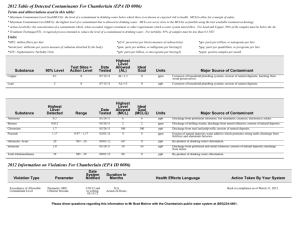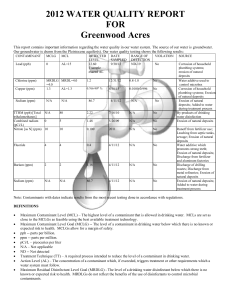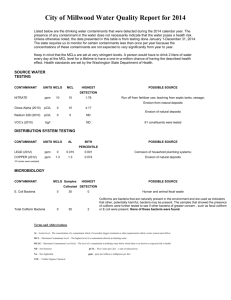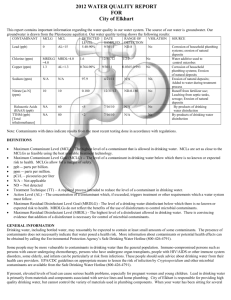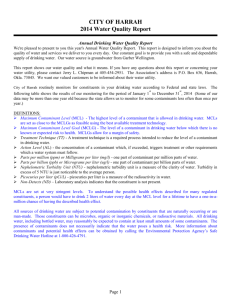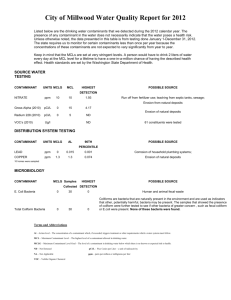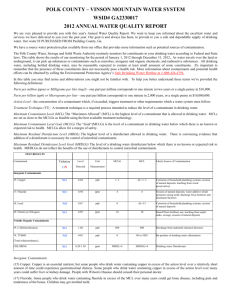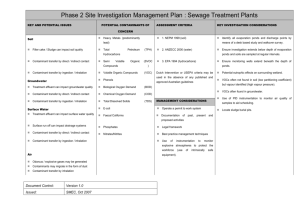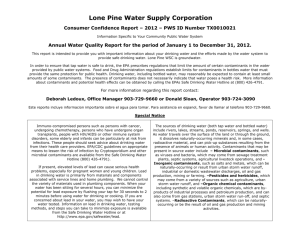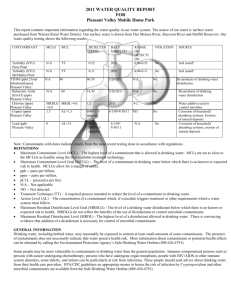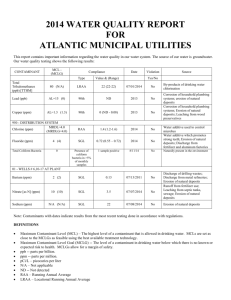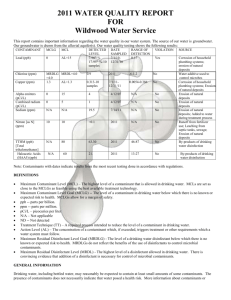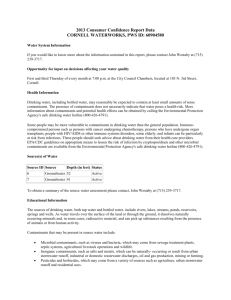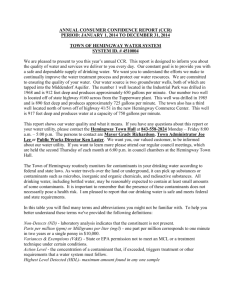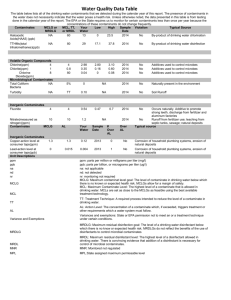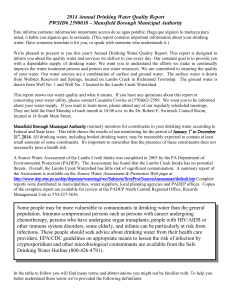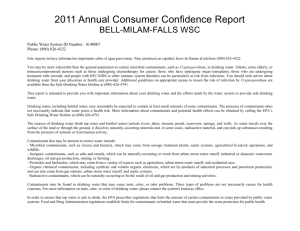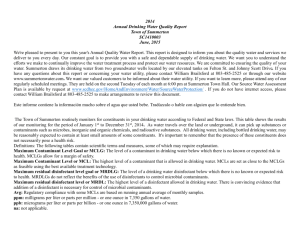The Talatha Rural Community Water District routinely monitors for
advertisement
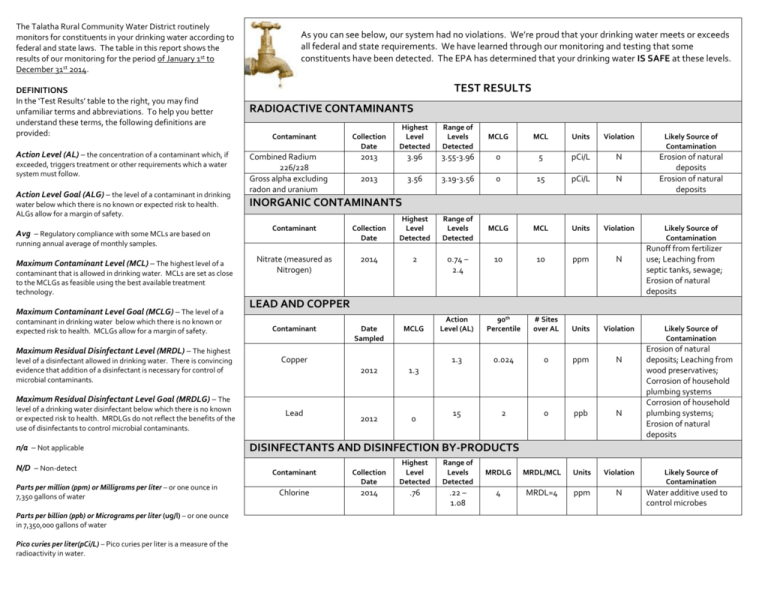
The Talatha Rural Community Water District routinely monitors for constituents in your drinking water according to federal and state laws. The table in this report shows the results of our monitoring for the period of January 1st to December 31st 2014. DEFINITIONS In the ‘Test Results’ table to the right, you may find unfamiliar terms and abbreviations. To help you better understand these terms, the following definitions are provided: Action Level (AL) – the concentration of a contaminant which, if exceeded, triggers treatment or other requirements which a water system must follow. Action Level Goal (ALG) – the level of a contaminant in drinking water below which there is no known or expected risk to health. ALGs allow for a margin of safety. Avg – Regulatory compliance with some MCLs are based on As you can see below, our system had no violations. We’re proud that your drinking water meets or exceeds all federal and state requirements. We have learned through our monitoring and testing that some constituents have been detected. The EPA has determined that your drinking water IS SAFE at these levels. TEST RESULTS RADIOACTIVE CONTAMINANTS Contaminant Combined Radium 226/228 Gross alpha excluding radon and uranium contaminant that is allowed in drinking water. MCLs are set as close to the MCLGs as feasible using the best available treatment technology. Maximum Contaminant Level Goal (MCLG) – The level of a contaminant in drinking water below which there is no known or expected risk to health. MCLGs allow for a margin of safety. Highest Level Detected Range of Levels Detected MCLG MCL Units Violation Likely Source of Contamination 2013 3.96 3.55-3.96 0 5 pCi/L N 2013 3.56 3.19-3.56 0 15 pCi/L N Erosion of natural deposits Erosion of natural deposits MCLG MCL Units Violation 10 10 ppm N INORGANIC CONTAMINANTS Contaminant Collection Date Highest Level Detected Range of Levels Detected Nitrate (measured as Nitrogen) 2014 2 0.74 – 2.4 Date Sampled MCLG running annual average of monthly samples. Maximum Contaminant Level (MCL) – The highest level of a Collection Date Contaminant Action Level (AL) 90th Percentile # Sites over AL Units Violation Copper 1.3 0.024 0 ppm N 2012 1.3 2012 0 15 2 0 ppb N Maximum Residual Disinfectant Level Goal (MRDLG) – The level of a drinking water disinfectant below which there is no known or expected risk to health. MRDLGs do not reflect the benefits of the use of disinfectants to control microbial contaminants. n/a – Not applicable N/D – Non-detect Parts per million (ppm) or Milligrams per liter – or one ounce in 7,350 gallons of water Parts per billion (ppb) or Micrograms per liter (ug/l) – or one ounce in 7,350,000 gallons of water Pico curies per liter(pCi/L) – Pico curies per liter is a measure of the radioactivity in water. Runoff from fertilizer use; Leaching from septic tanks, sewage; Erosion of natural deposits LEAD AND COPPER Maximum Residual Disinfectant Level (MRDL) – The highest level of a disinfectant allowed in drinking water. There is convincing evidence that addition of a disinfectant is necessary for control of microbial contaminants. Likely Source of Contamination Lead Likely Source of Contamination Erosion of natural deposits; Leaching from wood preservatives; Corrosion of household plumbing systems Corrosion of household plumbing systems; Erosion of natural deposits DISINFECTANTS AND DISINFECTION BY-PRODUCTS Contaminant Collection Date Highest Level Detected Range of Levels Detected Chlorine 2014 .76 .22 – 1.08 MRDLG MRDL/MCL Units Violation 4 MRDL=4 ppm N Likely Source of Contamination Water additive used to control microbes

